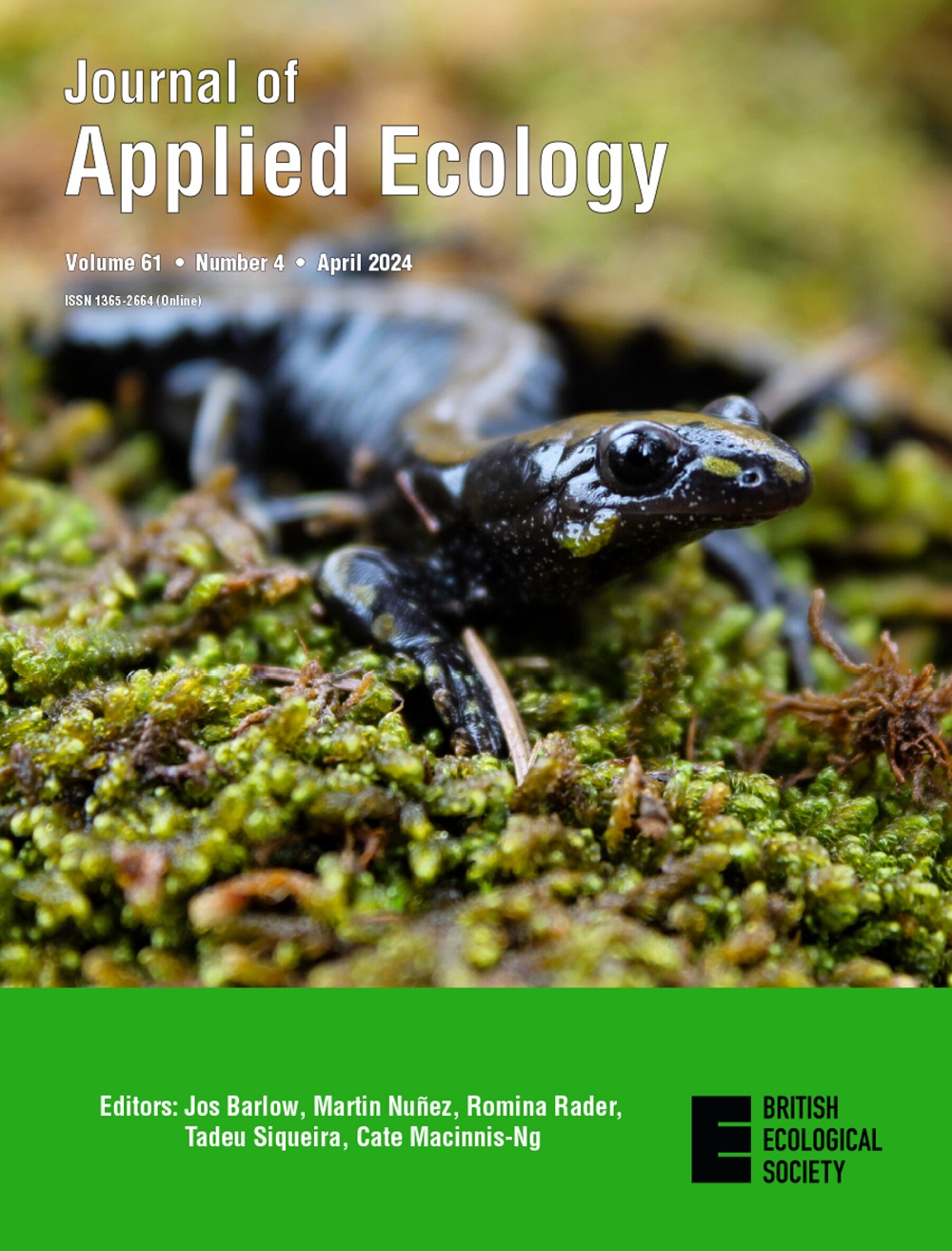求助PDF
{"title":"夏威夷低地湿林中影响幼苗再生的光照质量和空间变化","authors":"Jodie R. Rosam, Laura Warman, Rebecca Ostertag, Ryan Perroy, Susan Cordell","doi":"10.1111/1365-2664.14775","DOIUrl":null,"url":null,"abstract":"<p>\n \n </p>","PeriodicalId":15016,"journal":{"name":"Journal of Applied Ecology","volume":"61 11","pages":"2638-2652"},"PeriodicalIF":5.0000,"publicationDate":"2024-09-09","publicationTypes":"Journal Article","fieldsOfStudy":null,"isOpenAccess":false,"openAccessPdf":"","citationCount":"0","resultStr":"{\"title\":\"Light quality and spatial variability influences on seedling regeneration in Hawaiian lowland wet forests\",\"authors\":\"Jodie R. Rosam, Laura Warman, Rebecca Ostertag, Ryan Perroy, Susan Cordell\",\"doi\":\"10.1111/1365-2664.14775\",\"DOIUrl\":null,\"url\":null,\"abstract\":\"<p>\\n \\n </p>\",\"PeriodicalId\":15016,\"journal\":{\"name\":\"Journal of Applied Ecology\",\"volume\":\"61 11\",\"pages\":\"2638-2652\"},\"PeriodicalIF\":5.0000,\"publicationDate\":\"2024-09-09\",\"publicationTypes\":\"Journal Article\",\"fieldsOfStudy\":null,\"isOpenAccess\":false,\"openAccessPdf\":\"\",\"citationCount\":\"0\",\"resultStr\":null,\"platform\":\"Semanticscholar\",\"paperid\":null,\"PeriodicalName\":\"Journal of Applied Ecology\",\"FirstCategoryId\":\"93\",\"ListUrlMain\":\"https://onlinelibrary.wiley.com/doi/10.1111/1365-2664.14775\",\"RegionNum\":1,\"RegionCategory\":\"环境科学与生态学\",\"ArticlePicture\":[],\"TitleCN\":null,\"AbstractTextCN\":null,\"PMCID\":null,\"EPubDate\":\"\",\"PubModel\":\"\",\"JCR\":\"Q1\",\"JCRName\":\"BIODIVERSITY CONSERVATION\",\"Score\":null,\"Total\":0}","platform":"Semanticscholar","paperid":null,"PeriodicalName":"Journal of Applied Ecology","FirstCategoryId":"93","ListUrlMain":"https://onlinelibrary.wiley.com/doi/10.1111/1365-2664.14775","RegionNum":1,"RegionCategory":"环境科学与生态学","ArticlePicture":[],"TitleCN":null,"AbstractTextCN":null,"PMCID":null,"EPubDate":"","PubModel":"","JCR":"Q1","JCRName":"BIODIVERSITY CONSERVATION","Score":null,"Total":0}
引用次数: 0
引用
批量引用


